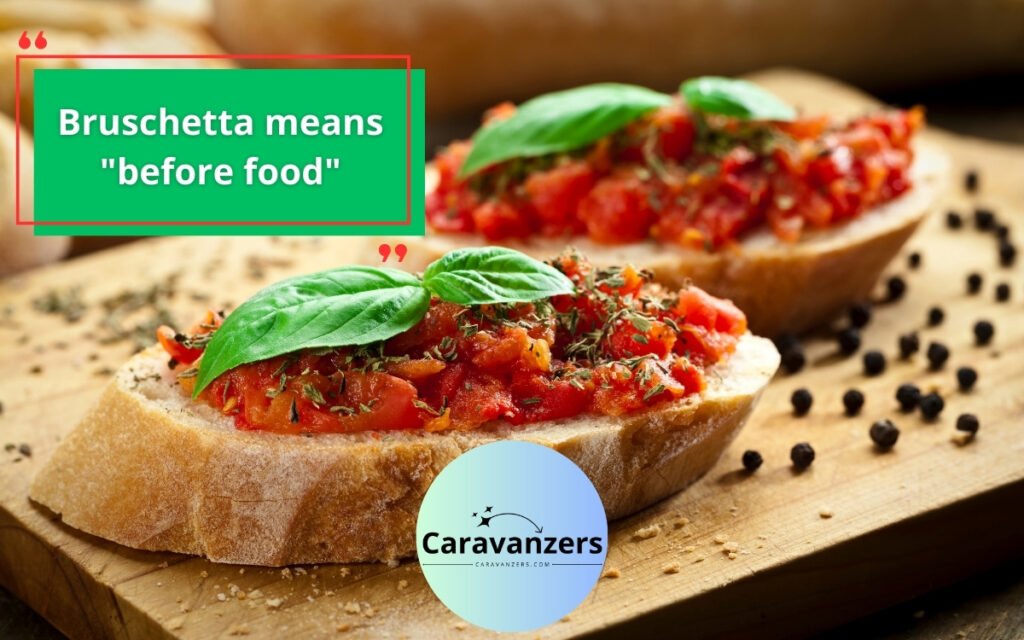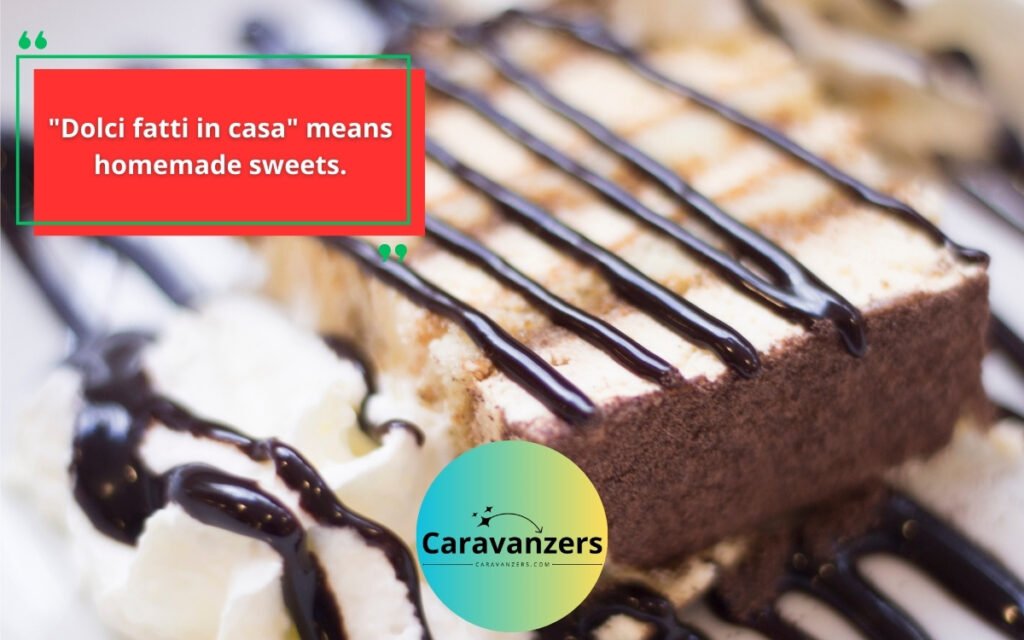
Italian meal is structured in a common sense way that takes you on a food journey. This guide is for those interested in Italian food.
As a result of the many fast food restaurants being around us, so many of us feel intimidated by the fact that an Italian meal has about 9 steps or courses.
Of course, there is no need to feel intimidated.
Called corso, certainly each step brings one closer to the experience of what it means to really enjoy food. As a result, a meal is a lot more than just downing some food.
Meanwhile, we will start with a meal plan, then talk about the structure of the meal, before we dive into the steps or courses.
Introduction
Who doesn’t love Italian food, am I right? This guide has a step-by-step journey to enjoying an Italian meal.
I wrote this article to emphasize the importance of planning and highlights the various courses that make up an Italian meal.
The structure of the meal is generally flexible and influenced by individual preferences.
So, you will find in the guide that the different steps include stimulation with an aperitivo, appetizers (antipasto), first course (primo), second course (secondo), side dishes (i cortorni), dessert (dolce), fruits (frutta), coffee (caffè), and finally, a digestive drink (digestivo).
Meanwhile, I also encourage you to plan your Italian meals ahead of time and provides recipe suggestions from Maria Gentile’s book.
Italian Meal Plan

Italians plan their meal the day before.
For example, whether you are a man or a woman, you will stop by at the grocery store the night before so that you can gather what you need for the next day.
Meanwhile, Italians try their best to get some things daily. For instance, breads or dairy.
Of course, these days many people are busy with their careers and grab quick lunches at work.
However, as you will see below, Italian meals are so intense that one should really plan them ahead of time.
So, that is why we encourage you to plan it ahead.
For instance, if you’re a tourist in a major Italian city, do you know where you want to eat your lunch tomorrow?
Italian Meal Structure
Because Italian meal structure is heavily influenced by the individual, one size does not fit all.
For example, are you a late-nighter or one of those people who wakes up at the crack of dawn?
Meanwhile, there are certain things that remain the reality.
Certainly, Italian breakfast, called prima colazione, is not as popular as the other meals of the day. As a result, many Italians don’t eat breakfast.
On the other hand, most Italians love their coffee. Whether one has cappuccino or caffè latte is an individual thing.
Finally, it is typical that a person will have a cornetto, which is a piece of pastry, along with their coffee.
Since many Italians skip breakfast, then what about lunch?
Lunch, called pranzo, is very popular.
As a result, it is probably the one meal every Italian will have in any given day.
Whereas a Spanish will have a siesta, an Italian will have his or her long lunch break (usually from 1pm to 3pm).
There are several phases to an Italian meal and the following sections feature that.
Meanwhile, a dinner or cena is not as big as lunch. For instance, a soup or sandwich will suffice for most.
Step 1: Stimulation
Because they are civilized, Italians start their meals with aperitivo, or something small, to stimulate the appetite.
“I love the concept of the Italian aperitivo,” says Andrea Adams, a contributor of the Huffington Post and the co-founder of Travelista TV. “It’s a simple idea and a very social and functional way of meeting up with friends, having a cocktail, and enjoying hors d’oeuvres.”
Generally, people will have some wine. However, it is also popular to have some nuts or olives as well.
Step 2: Appetizer

So, an antipasto is usually the first start to “real” food.
Meaning “before food,” you will usually see people have cold meats, but healthy conscious folks might have a bruschetta instead.
“Like the opening credits for a film, the appearance of the antipasto announces to the crowd that something special is about to begin,” explain DeLallo, the Italian-American food company.
So, if an aperitivo is about stimulating the appetite, well, then antipasto is really going in.
It is similar to the American appetizer.
Step 3: First Course
So, Italians start their actual meals with a primo, or a first course.
Because it means “first,” a primo is usually a pasta.
“Because I normally don’t eat pasta,” says Julie, an American woman I met in Rome, “I prefer to eat something else, like a soup.”
Of course, there is no “hard” rule and one can instead enjoy a soup or even a rice meal.
For example, look at your menu and you might see more things on there.
Look for “Primi Piatti” on the menu.
Meanwhile, Maria Gentile’s book features many kinds of meals that you can use as your primos.
For instance, we chose from her book recipes for pasta, a Milanese minestrone, and a royal soup.
Step 4: Second Course
So, with secondo, or the second course, you will probably get meat (secondi di carne) or fish (secondi di pesce) in your meal.
So, it depends on the situation.
Personally, I love Italian seafood and generally go for something fishy.
For example, bistecca di tonno or a tuna steak.
Meanwhile, you should know that tuna steaks in Italy come with olives and tomato.
So, what are some second course meals we included in our guide?
For example, a hunter’s style chicken, wild duck, and rabbit.
Step 5: Side Dishes
So, with i cortorni, or the side dish, often with the secondo course, you will have vegetables in your meal.
Depending on the region, side dishes can be hearty (potatoes) or light (salads).
As a result, we chose from Gentile’s book some recipes such as dried mushrooms, roasted eggplants, and French peas for this section.
Step 6: Dessert

So, with dolce, or the dessert, you will have your sweets.
Good restaurants will often use homemade sweets (dolci fatti in casa) because they know Italians don’t like things out of boxes.
Of course, as you will see from our guide, Italian sweets are not the easiest to make, which is why Italians respect their dedicated chefs.
Meanwhile, we included recipes from Gentile’s book such as a hazelnut pudding, a sultan style cake, and pistachio ice cream for this section.
Step 7: Fruits
So, with frutta, or the fruit course, you will have your fresh fruits.
Of course, Italians don’t eat fruit with their hands, even at home.
Instead, they use fork and knife to enjoy their fresh fruits.
Generally, at home a basket of fruit is brought to the table and you pick whichever fruit you’re feeling that day.
In restaurants, you will order it from the menu under the fruits section.
Step 8: Coffee
With caffè, or the coffee course, you will have your coffee.
Due to the diverse taste and the large meal, Italians have coffee to avoid that sluggish feeling one gets afterwards.
As such, coffee is enjoyed almost at the end of the meal.
However, you still have one more step before you’re finished with your Italian meal.
Step 9: Digestive
With digestivo, or the digestive course, you will have a shot of liquor.
Because Italians believe having a small amount of liquor as you final step means that the body will digest the meal in a useful way.
For example, coffee is needed to wake the body, but digestive, which is widely called ammazzacaffè (coffee killer), is necessary.
As such, whether at home or at a restaurant, Italians will finish their meal with a digestive drink.
Sometimes, Italians will go out, and will have this in an outdoor cafe. This is different from street food, though.
Italian Meal – Final Thoughts
Because an Italian meal has several stages or steps, one should really plan for it.
For instance, many Italians plan their meals the night before by stopping by the grocery store on their way back from work or long evening walks.
However, Italians like to purchase somethings on the day of such as bread and milk.
Meanwhile, an Italian meal has nine courses that start with a drink and end with a drink.
So, did you like this article? If so, let us know what you liked about it.
Meanwhile, if you did not like it, tell us what we can do to improve.
AJ Paris is a travel photographer based in New York. He is the editor of Caravanzers.
